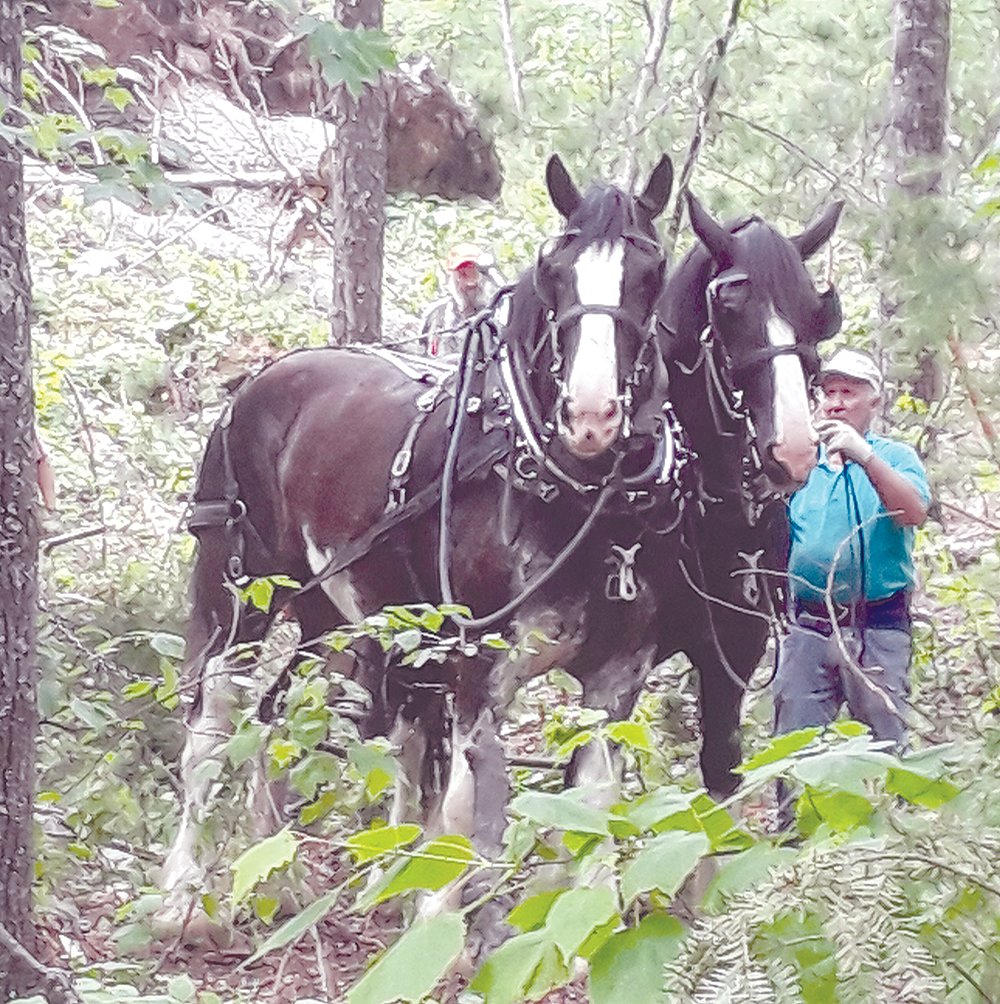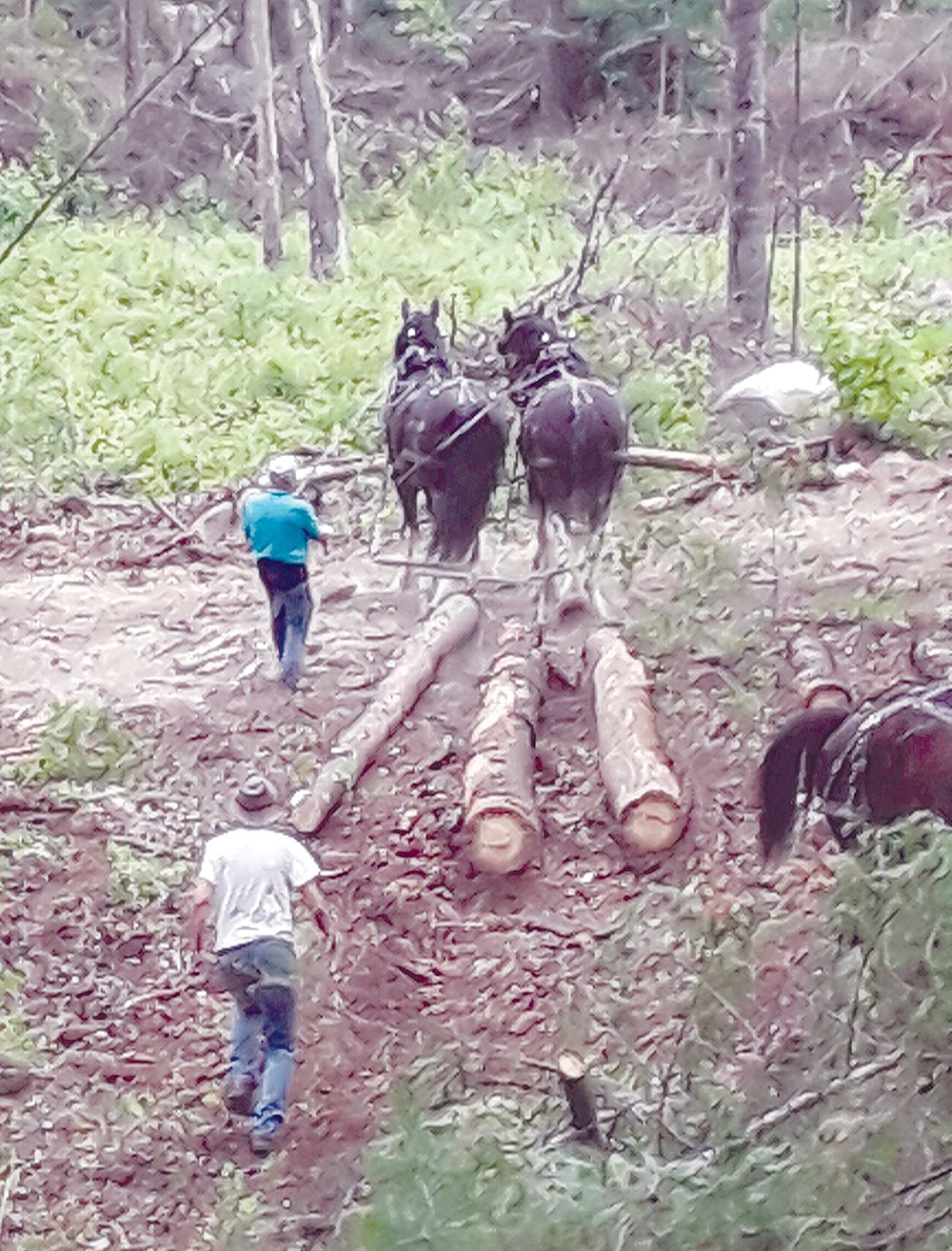Support the Timberjay by making a donation.
Low-impact logging
Blowdown salvage done with ‘horse power’
ELY - At times, returning to old-fashioned methods to get the job done is not only more efficient but admirable. Removing downed trees from a 2017 windstorm was on the to-do list at the Steger …
This item is available in full to subscribers.
Attention subscribers
To continue reading, you will need to either log in to your subscriber account, or purchase a new subscription.
If you are a current print subscriber, you can set up a free website account and connect your subscription to it by clicking here.
If you are a digital subscriber with an active, online-only subscription then you already have an account here. Just reset your password if you've not yet logged in to your account on this new site.
Otherwise, click here to view your options for subscribing.
Please log in to continue |
Low-impact logging
Blowdown salvage done with ‘horse power’
ELY - At times, returning to old-fashioned methods to get the job done is not only more efficient but admirable. Removing downed trees from a 2017 windstorm was on the to-do list at the Steger Wilderness Center this summer and that provided a lesson in one old school method.
The homestead of Will Steger, located about ten miles outside of Ely, saw many old-growth trees fall in the storm, valuable resources that Steger hoped to salvage with minimal impact on the surrounding forest.
That’s why he turned to longtime associates Lisa Ringer and Mike Berthiaume, of Minneapolis, who brought their team of four “Shire” horses to the site. Ely resident Mike Gilgosch was there and told the story of how the horses got the job done.
“Shires are draft horses that originated from Great Britain and are thought to be descendents of the British “great horse,” used in battle,” Gilgosch said.
“Shires are noted for having an easy-going temperament and physical features that can simply be described as extraordinary,” he said. “They stand tall and proud, have massive hooves with distinctive fine, silky, feathering hair above them. It’s told they typically stand 16 or more hands high and often weigh 1,600 to 1,800 pounds, or more. One gets the feeling that they might be labeled massive,” Gilgosch added.
Teams of two horses each with a single handler, worked their way up the hilly terrain in the blowdown area. “With some patience and slow, determined maneuvering, Mike and Lisa alternately coaxed each team up the slopes where fallen timbers had been chain-sawed into manageable lengths,” said Gilgosch.
Responding to their handlers, the teams were directed to turn, backup, come forward, and “whoa,” of course. “The surefootedness and power in each of their steps could be likened to pistons of iron-age machines, although much more precise and measured than modern logging machines and tools,” Gilgosch said.
One by one, massive trunks of both white and red pines were dragged down to a staging area. Later, the massive logs were hauled to the Wilderness Center’s lumberyard area where a portable sawmill processed each tree into various sized pieces of lumber.
“Will lets little go to waste at the Wilderness Center by using site-sourced materials for the growing number of housing and building structures scattered at, and near, the multiple campus activity areas,” Gilgosch said.. “The whirr and hum of various woodworking machines can often be heard operating at the site.”
Much of the timber will ultimately be used to construct future cabins and buildings on site, Steger said, including the largest pieces finding their way into structural framing pieces.
Smaller pieces may find their way to the most minute places, being used for items such as pins used to hold down flooring boards or, as in the past, for frames of the many handcrafted stained glass windows and doors Will and staff have assembled. During and after each workday, the work crew assembled for meals, having the chance to socialize. “Their conversations and demeanor could be regarded as a reflection of what some of our distant ancestors may have experienced,” Gilgosch said. “Nostalgia was a big part of the day across the multiple generations present, a day filled with satisfaction and accomplishment.”











